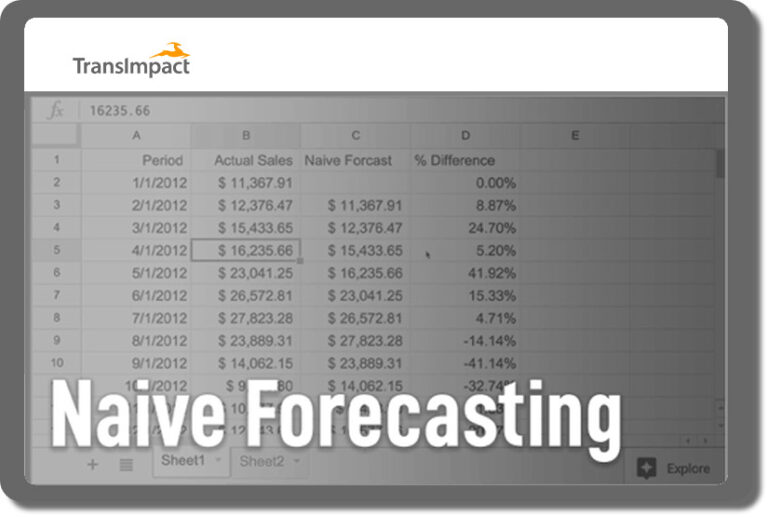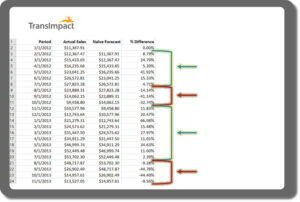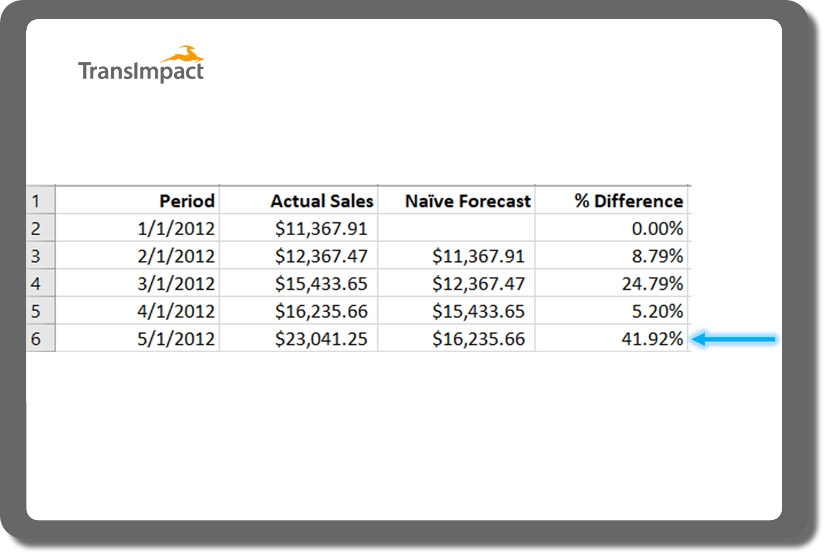
The supply chain is a constantly evolving ecosystem. From order fulfillment to adequate lead time, everything is becoming streamlined via advanced technology. Given the growing implementation of newer technologies like artificial intelligence and machine learning, the supply chain is becoming increasingly effective and accurate in delivering products on time. But there are still some contemporary techniques that remain effective. One of these is the naïve forecasting method. In this blog, we will explain the pros and cons of naïve forecasting and how it is still relevant in today’s supply chain management.
What Is Naïve Forecasting in supply chain?
Naïve forecasting is a plain and simple approach to forecasting that relies on your company’s historical data. In simple terms, this method uses your previous year’s actual data as the current year’s forecasting data. This way, you can easily predict your future strategy based on your past data.

Pros of Naïve Forecasting
1. Simple and easy to implement
Naïve forecasting is significantly easier than other forecasting methods like single or multiple linear regression methods. It does not require complex calculations or specialized algorithms. People without much experience in forecasting can also perform this method.
2. Limited data is sufficient
This method is entirely based on historical data, making it a fitting choice for businesses with limited resources or those that have just started forecasting their operations. You can utilize this method efficiently if you have the data of your historical demand.
3. Easier to integrate
Due to its simplistic nature, naïve forecasting can be more easily integrated into your system than recent technologies, which take significant time to adapt because of their complexity. This method is easy to apply to abrupt changes in demand patterns. It does not take additional time to incorporate new data and adjust forecasts.
4. It can be an apt performance benchmark
Naïve forecasting methods can serve as a baseline for calculating the overall performance of more advanced forecasting methods. By comparing the results of the latest approaches to the naïve forecast, organizations can evaluate the added value of investing in complex algorithms.
5. Ideal for steady demand
In certain situations where demand is comparatively stable and not subject to sudden market shifts or seasonality, naïve forecasting in the supply chain can provide effectively accurate predictions. This is a great fit for businesses dealing with steady, consistent, and non-volatile markets.

Cons of Naïve Forecasting
1. Lack of precise forecasting
The most critical shortcoming of naïve forecasting is its lack of precise prediction. Since it can only extrapolate past data into the future, it does not account for seasonal variations, specified patterns, or external factors that can influence demand planning. As a result, it tends to execute poorly in unpredictable and constantly evolving markets.
2. Inability to harness seasonal patterns
Naïve forecasting methods fail to capture seasonal market trends, a common characteristic of many products and services. These forecasting errors result in overestimating or underestimating future demand, which could affect your bottom line.
3. Not ideal for new product launch
Whenever a business introduces a new line of products, historical data becomes irrelevant, making naïve forecasting pointless. In such scenarios, depending on past demand data could lead to inadequate inventory and demand planning. This could result in missed sales opportunities for the new line of products.
4. More reactive than proactive
As naïve forecasting does not consider demand fluctuations and external factors, companies can end up reacting to sudden changes rather than proactively preparing for them. This approach can lead to increased lead times, inappropriate pricing, and dissatisfied customers.
5. No business insights into market influences
Naïve forecasting does not offer business insights into factors that drive demand. This could affect your company’s decision-making process and bottom line. Understanding essential information based on your data is highly critical in this competitive market. This is were naïve forecasting lacks dependency and accountability.
Final take
While naïve forecasting offers ease of implementation and simplicity, it can be limited and inadequate, hindering its efficiency in the complex and dynamic landscape of supply chain optimization. Businesses should clearly consider the scope and size of their operations, market situations, and quality and availability of historical data before implementing this method of forecasting.
Skillfully execute your demand planning strategies with TransImpact
TransImpact’s inventory management software provides end-to-end visibility into your inventory movements to reveal comprehensive information for improved decision-making processes. Our system can accurately report your inventory levels, so you avoid scenarios like understocking or overstocking.

